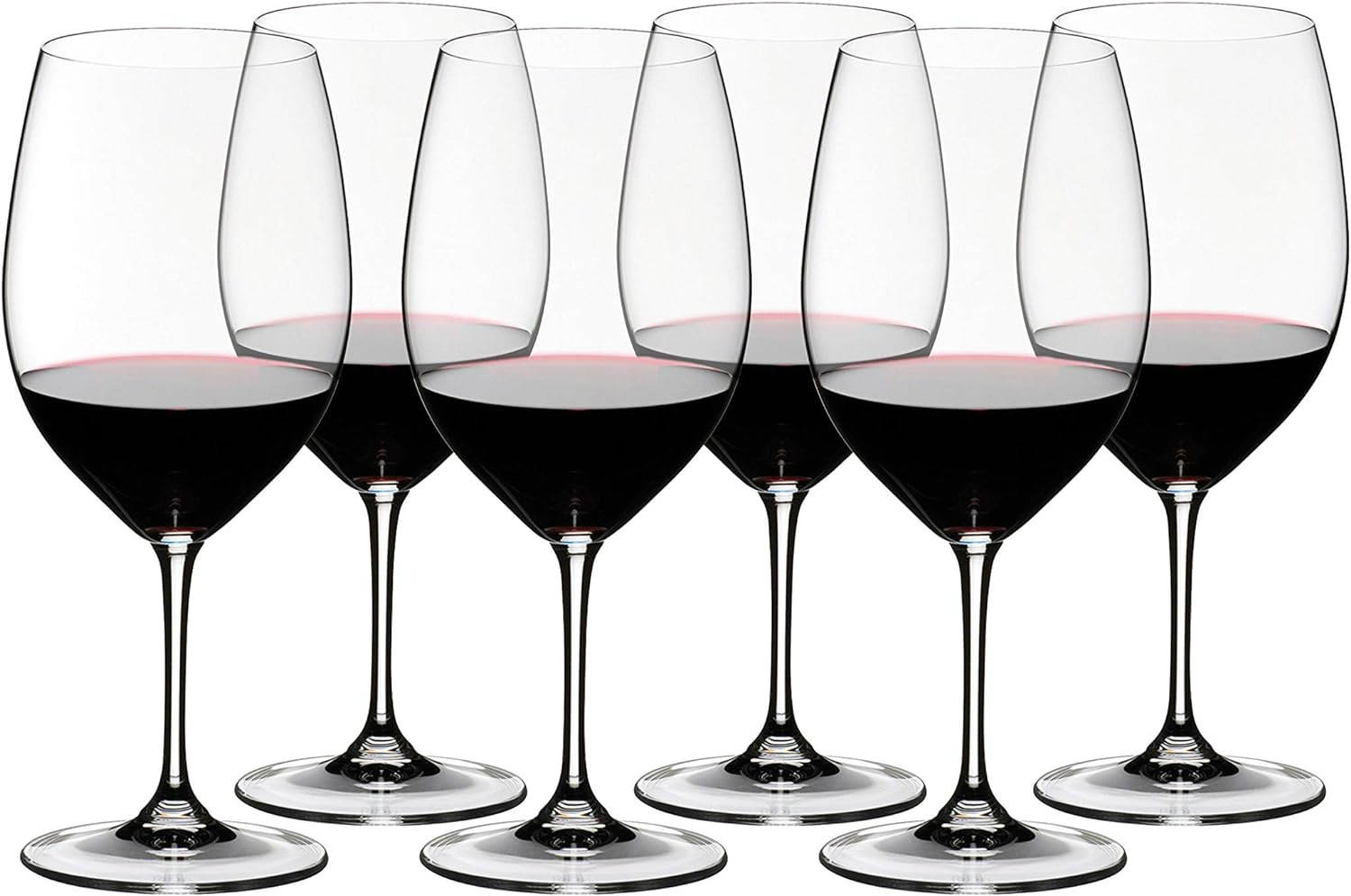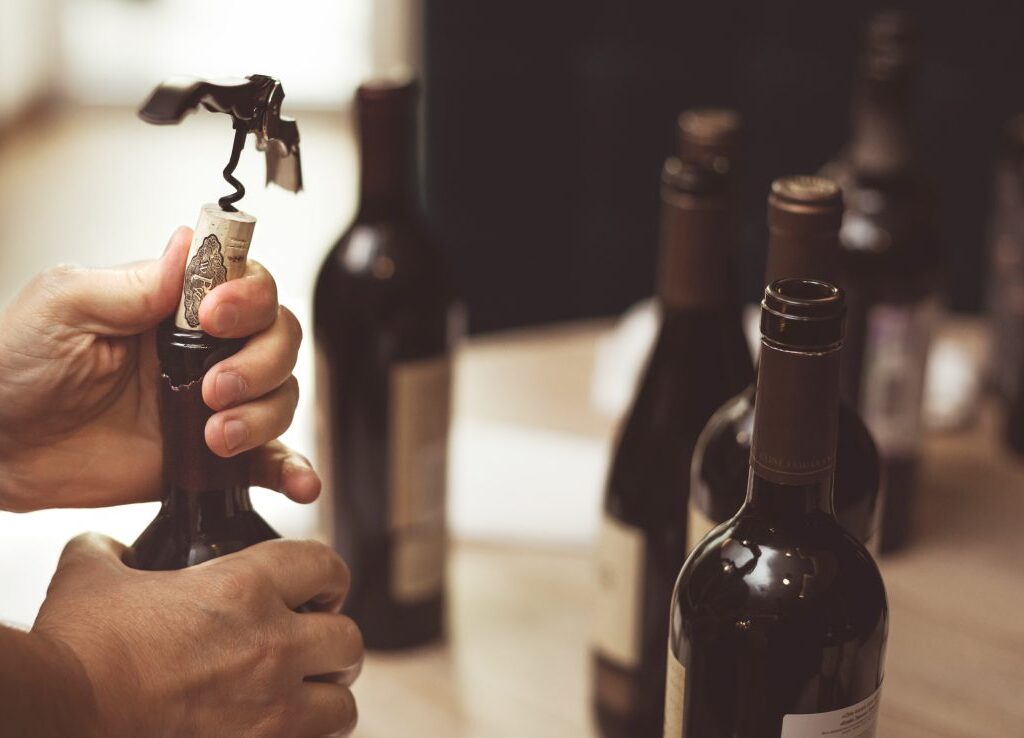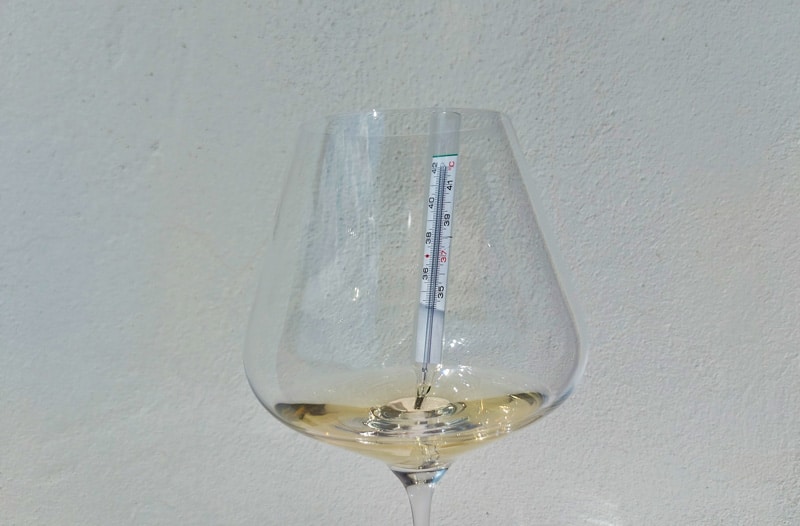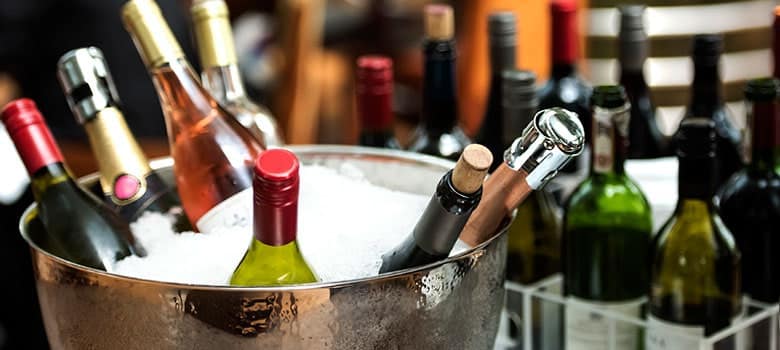4 Wine Glasses You Will Ever Need

Many wine connoisseurs have been to wine tastings, but not too many have been to a “wine glass tasting”. Instead of tasting and comparing different wines, You are tasting the same wine from different wine glasses. This experience is an eye-opener to many. Most famous for its wine glass tastings is Riedel. Riedel produces varietal-specific glasses. Their approach is that every variety deserves a specially shaped glass to express itself fully. It can seem as an exaggeration because there can be more than considerable differences between particular wines made from the same grape variety, but there is no doubt that certain shapes are better for enjoying certain types of wine. Let’s discover the essential wine glasses to enhance your wine-tasting experience!
4 must-have wine-glasses
Using the right wine accessories improves the taste of wine, and it is not cheating if you use a proper glass. Glass doesn’t change the wine. Instead, a wine glass functions as a tool that allows you to fully experience the flavors and aromas of the wine.
This tool is worth a fortune if you know how to use it, but it doesn’t need to cost you a fortune. Although there are some quite obsessed wine glass enthusiasts out there, even they will agree you can cover the majority of wines with four types of wine glasses:
1. Standard white wine glass
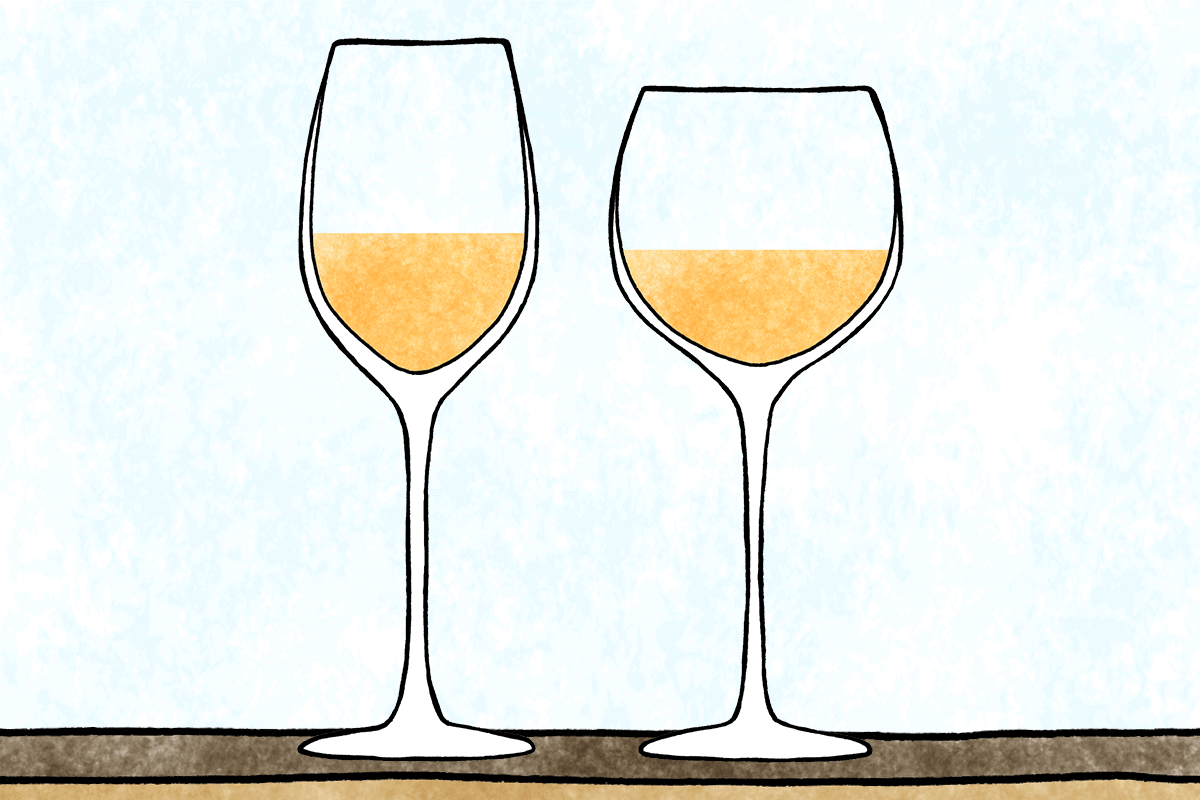
A “standard” white wine glass, smaller in volume, is great for most
- young white wines,
- rosé wines,
- dessert wines, and
- even sparkling wines.
It will preserve the primary fruitiness and elevate freshness. It is definitely better for sparkling than the widespread “flutes,” especially if you are interested in the substance and not only bubbles and looking good in photos.
2. Wider white wine glass
A “wider” white wine glass, also known as the Chardonnay (or Montrachet) glass, with a larger bowl, designed to increase the air exposure in order for a structured and full-bodied white wine to open up.
This wine glass can also work for orange, organic wines, and some dessert wines.
This tasting set includes four glasses: Cabernet Sauvignon, Pinot Noir, Sauvignon Blanc, and Chardonnay from the Riedel Winewings series.
3. Red Burgundy wine glass
A red Burgundy wine glass is very important because it is suitable not only for the majority of subtle aromatic reds but also for many aged whites or orange wines.
It is usually more round with more space to collect the aromas and forward them to the nose, thanks to a narrower top.
There is an expression saying you can enjoy a Bordeaux from a Burgundy glass, but you cannot enjoy a Burgundy from a Bordeaux glass.
This set includes Cabernet/Merlot, Sauvignon Blanc, Pinot Noir, and Chardonnay glasses. First Riedel wine glass series with bowls featuring a light optic impact.
4. Red Bordeaux wine glass
A red Bordeaux wine glass, designed almost exclusively for full-bodied reds with higher alcohol and tannin levels in order to deliver the aromatic impact straight to your nose.
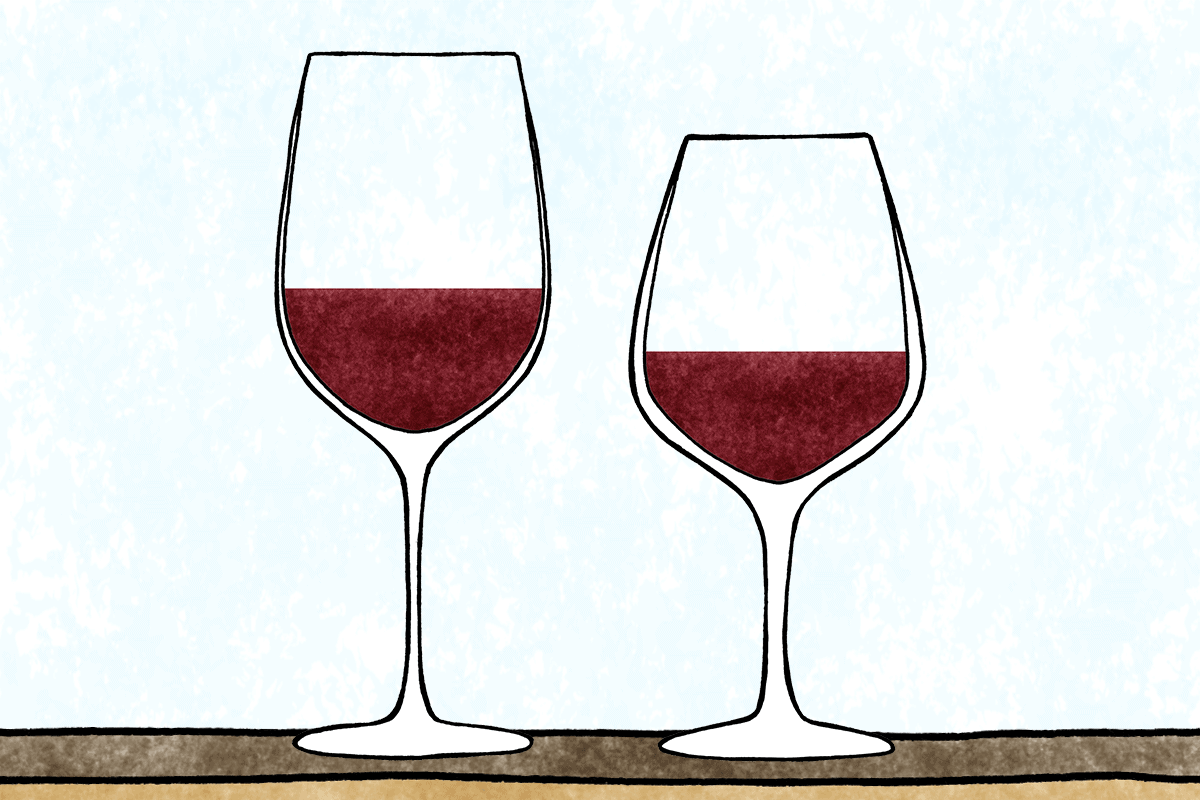
How many wine glasses should you own?
Deciding on the ideal number of wine glasses to own can be a dilemma for wine enthusiasts and novices. It is recommended to have a minimum of six glasses for daily use, meaning six for red wines and six for white wines. If you prefer sparkling wines, add another four to six.
The right quantity of wine glasses in your collection ensures that you’re prepared to entertain guests, savor different wine varieties, and enhance your overall tasting experience.
Let’s explore the factors to consider when determining how many wine glasses you should own, helping you make an informed decision.
- Consider Your Wine Preferences: Your wine preferences are crucial when determining the number of wine glasses to own. If you enjoy a wide range of wine styles, having a diverse selection of glasses is beneficial. The three main types to consider are red wine glasses, white wine glasses, and sparkling wine flutes. Red wine glasses typically have larger bowls to enhance the wine’s aromas and allow for proper aeration. White wine glasses have smaller bowls to maintain cooler temperatures. Sparkling wine flutes are designed to preserve effervescence and showcase the elegant streams of bubbles. Assessing your wine preferences will help you determine the necessary variety of wine glasses.
- Entertaining and Guest Considerations: If you frequently host gatherings or dinner parties, having ample wine glasses is essential. Consider the average number of guests you typically entertain and ensure you have enough glasses to accommodate everyone. It’s recommended to have at least one wine glass per guest, if not a few extras, to account for breakages and unexpected additions to the guest list. Investing in a set of wine glasses specifically designated for entertaining will make hosting easier and more enjoyable.
- Quality over Quantity: While it’s tempting to accumulate a large collection of wine glasses, it’s important to prioritize quality over quantity. Investing in high-quality glasses enhances your wine-tasting experience and ensures their longevity. Look for glasses made from thin, lead-free crystal or high-quality glass. These materials provide clarity durability and are less prone to scratching. Opting for well-crafted glasses will elevate your wine enjoyment and reduce the need for frequent replacements.
- Storage and Space: Consider the storage and space available in your home when deciding on the number of wine glasses to own. Properly storing wine glasses is essential to protect them from damage. If space is limited, it may be practical to have a smaller collection that can be easily stored and accessed. Alternatively, if you have a dedicated wine cellar, wine refrigerator, or a spacious cabinet, you can consider expanding your collection.
- Personal Lifestyle and Frequency of Use: Consider your lifestyle and the frequency at which you use wine glasses. If you enjoy wine regularly or are a wine connoisseur, owning a larger selection of glasses may be beneficial. On the other hand, if you only indulge in wine occasionally, a smaller set of versatile glasses may suffice. Assessing your wine consumption habits will help you balance practicality and personal preferences.
Do expensive wine glasses make a difference?
When indulging in a fine glass of wine, the stemware in which it is served plays a significant role in the overall tasting experience.
Wine enthusiasts often ponder whether investing in expensive wine glasses enhances their favorite vintages’ flavors and aromas.
Let’s delve into the fascinating world of wine glasses and explore their potential influence on your enjoyment of a fine wine.
- The Science Behind Wine Glasses: Wine appreciation goes beyond simply sipping the liquid; it involves engaging multiple senses, particularly taste and smell. Wine glasses are carefully crafted to enhance these sensory experiences. The glass’s shape, size, and quality can affect how the wine interacts with the air, the release of its bouquet, and, ultimately, the flavors experienced by the taster.
- Shape and Design: Premium wine glasses are meticulously designed to optimize the wine’s exposure to oxygen. The bowl shape, stem length, and rim diameter contribute to the tasting experience. A larger bowl provides ample space for the wine to breathe, allowing aromas to develop and intensify. The narrow rim directs the wine to specific tongue areas, enhancing the perception of different flavors. The length of the stem prevents the hand’s warmth from influencing the temperature of the wine, ensuring it remains at an optimal level.
- Quality and Material: Expensive wine glasses are often made from high-quality crystal or lead-free glass. Crystal glasses, in particular, are renowned for their thinness and lightness, which allows the wine to flow smoothly onto the palate. Moreover, the composition of crystal or lead-free glass can enhance the visual presentation of the wine, showcasing its color, clarity, and viscosity, all of which contribute to the overall enjoyment of the tasting experience.
- The Impact on Wine Aromas and Flavors: Studies have shown that the shape and quality of a wine glass can significantly influence the perception of aromas and flavors. The design of an appropriate glass can enhance the release of volatile compounds, allowing the wine’s aromas to unfold more effectively. Additionally, the way the wine hits the tongue, depending on the glass shape, can alter the perception of sweetness, acidity, and bitterness. By using well-designed wine glasses, one can truly unlock the full potential of a wine’s complex characteristics.
- Considering the Cost: It is worth noting that not all expensive wine glasses guarantee a superior tasting experience. While higher price tags may often indicate better craftsmanship and quality materials, personal preferences and individual sensory perceptions can also play a crucial role. What might work exceptionally well for one person may not have the same impact on another. Thus, finding the right wine glass is a personal journey that may involve experimentation and exploration.
While the idea of investing in expensive wine glasses or any luxury wine accessories might seem extravagant to some, there is merit in considering their impact on the overall tasting experience.
The shape, design, and material of a wine glass can significantly enhance the perception of aromas and flavors, allowing wine enthusiasts to appreciate the complexities and nuances of their favorite vintages fully.
Whether you invest in high-end wine glasses or more budget-friendly options, the key lies in finding a glass that aligns with your preferences and enhances your enjoyment of the wonderful world of wine.
It’s important to note that even the fanciest wine glass won’t make bad wine taste better, but it can definitely enhance the flavor of an average one.
Conclusion
If four types of glasses are too much, some serious producers even offer a “universal” wine glass, but we recommend having at least a “standard” white wine glass and a red Burgundy wine glass. They can make all the difference.
Cheers to discovering new wine accessories and experiences!








